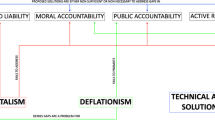Conclusion
The conclusion to be drawn from the preceding observations and theorizing should be that we must be very much aware of what has been called “technological functionalism” (Pieper, 1986:11). While functionalism as such is not bad, the moment it succumbs to mere structural technicality, the functions stop functioning: forced “adaptivity” takes the place of “adaptable” interaction.
That this problem is not due to a primordial blame, to be attached to the computer, becomes clear when one compares the computerized environment to other surroundings, such as, for example, the psychiatric treatment. In the psychiatric interview, as Davis (1986, 1988) has shown, the interest of the therapist is often limited to establishing a “contract” for treatment: for the therapist to function properly, there must be a therapy-defined (or therapy-definable) problem for him/her to attack, using the skills and experiences of the profession of which he/she is a representative and for which he/she has been properly trained.
This function, however, may not coincide with the patient's needs: it may well be the case that the problem which originally caused the patient to approach the therapist for treatment, in the end turns out not to be the problem that both agree on as the objective of the therapeutic treatment. “Re-formulating” the patients' problem in terms suitable to the available resources and techniques is thus typically a case of adapting the human to the system: again, we're faced with technological functionalism in the shape of what has been called “forced adaptivity” (see Mey, 1986).
We need to think seriously about the way we handle our computerized structures and their functions, and in particular about the design of supportive systems such as large databases, computer conferencing, or even simple electronic mail services. While adaptivity always is a case of manipulation, by which humans are tooled to the needs and strictures of the computer, adaptability, by contrast, allows such manipulation only inasmuch as those needs and strictures reflect, and are imposed by, the users' needs. The blind, mechanical force that makes us adapt ourselves to the machine should be replaced by the enlightened, humanizing force of the adaptable computer.
Similar content being viewed by others
References
Davis, K. (1986)(Re-)formulation in psychotherapy. Amsterdam: Vrije Universiteit.
Davis, K. (1988)Power under the microscope. Dordrecht, Holland: Foris.
Emonds, E. (1986) Categories of adaptivity: Issues for research. In: Michael Pieper, ed.,Living Paper. IFIP T.G. 6.3 (Human-Computer Interaction). Working-Subgroup on Software Ergonomics and Systems Adaptivity. St. Augustin, Germany: Gesellschaft für Mathematik und Datenverarbeitung.
Hooper, K. (1986) Architectural design: An analogy. In: Norman & Draper 1986: 9–23.
Mathiassen, L. and Andersen, P.B. (1986) Semiotics and Informatics: The impact of computer-based systems upon the professional language of nurses.Journal of Pragmatics 10(1): 1–26.
Mey, J.L. (1986) Forced Adaptivity. In: Michael Pieper, ed.,Living Paper. IFIP T.G. 6.3 (Human-Computer Interaction). Working-Subgroup on Software Ergonomics and Systems Adaptivity. St. Augustin, Germany: Gesellschaft für Mathematik und Datenverarbeitung.
Mey, J.L. (1989) Controlling Computopia. In: Lawrence J. McCrank, ed.Databases in the Humanities and the Social Sciences, Vol. 4. Medford, N.J.: Learned Information. pp. 457–472.
Norman, D.A. and Draper, S.W. (1986)User Centered System Design: New perspectives on human-computer interaction. Hillsdale, N.J.: Erlbaum.
Pieper, M. (1986) Computer conferencing: The gap between intention and reality. In: Michael Pieper, ed.,Living Paper. IFIP T.G. 6.3 (Human-Computer Interaction). Working-Subgroup on Software Ergonomics and Systems Adaptivity. St. Augustin, Germany: Gesellschaft für Mathematik und Datenverarbeitung.
Qvortrup, L. (1984)The social significance of telematics. Amsterdam/Philadelphia: John Benjamins.
Author information
Authors and Affiliations
Rights and permissions
About this article
Cite this article
Mey, J.L. Adaptability: Reflections. AI & Soc 6, 180–185 (1992). https://doi.org/10.1007/BF02472780
Issue Date:
DOI: https://doi.org/10.1007/BF02472780




